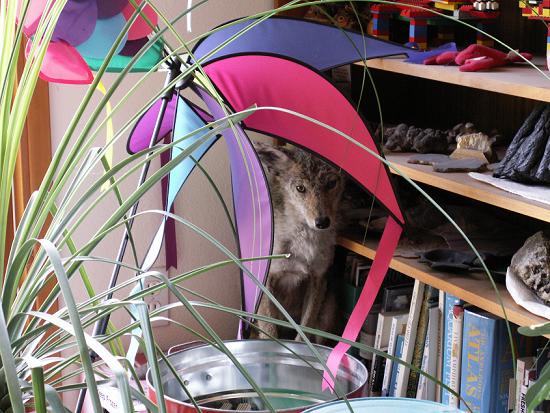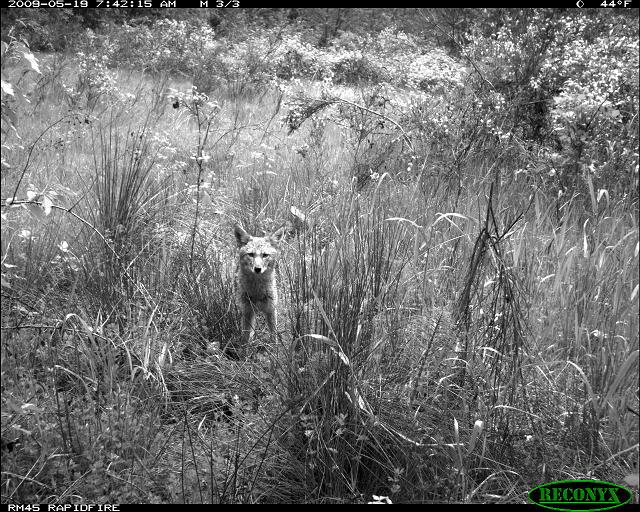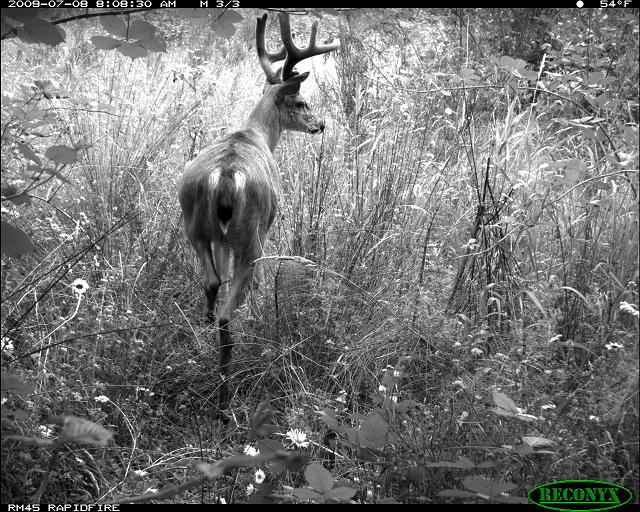Urbanization and Biodiversity in King County
If you could step back in time about 175 years, almost all of the developed areas in King County would have been covered with forest or wetland or grassy meadows. Much of downtown Seattle was a big estuary. The landscape of this area prior to European colonization would have been rich in wildlife habitat. Now, wildlife habitat is highly fragmented by roads and other human infrastructure.
The transformation of King County's landscape resulting from development, agriculture, and forestry has affected all native wildlife species in King County in some way. Vertebrate and invertebrate wildlife species have experienced habitat alteration, interrupted migration patterns, displacement, reduced reproductive success, and exposure to invasive species.
When forest patches become too fragmented, many of the animals that use this habitat become more susceptible to predators, including nest predators, and parasites. Non-native invasive animal species continue to be a growing threat in King County, as more are introduced over time.
Development also brings pollution, which is another threat to biodiversity. Fishes and marine mammals seem to be particularly susceptible to pollution. Toxic contaminants include chemicals used for industrial, consumer, and agricultural purposes, transportation-related chemicals, and byproducts from manufacturing and combustion of fossil fuels. For example, harbor seals and killer whales carry large concentrations of polychlorinated biphenyl (PCBs) compounds and increasingly greater concentrations of flame retardant chemicals in their fatty tissue. The effects of these chemical loads are not well known, but in the case of killer whales, the contaminants can weaken immune systems, cause reproductive failure, and lower the survival rate of calves through maternal transfer of contaminants.
Shoreline armoring is another aspect of development that leads to a loss of marine habitat. It also interferes with sediment transport. Throughout Puget Sound, armoring has led to a decline in forage fish spawning habitat, feeding habitat for marine birds, and total area and abundance of marine plants.
Species you may encounter - and not necessarily want to
Another effect of urbanization on biodiversity is an increase in the number of human-wildlife interactions. It is not unusual to encounter wildlife in urban and urbanizing areas. For example, black bears frequently show up at trash cans in rural areas to see what food scraps are there. You may encounter wildlife in your yard or neighborhood that you were not necessarily expecting or don't know how to handle. WDFW's Living with Wildlife web site offers information on just about any species likely to be present in King County that you might see in your yard or other spaces frequented by humans.
Coyotes
Coyotes are frequently in the local news. They are seen in Seattle’s suburbs and rural areas as well as in Seattle city limits. WDFW says, "Some of the most Frequently Asked Questions (FAQs) about urban/suburban wildlife fielded by Washington Department of Fish and Wildlife (WDFW) biologists are about coyotes." To answer questions, WDFW put together information on coyotes in their Coyote page for Living with Wildlife.
Here are a few recent news articles and blogs about coyote encounters in the greater Seattle area:
- Capitol Hill: Savvy survivors, January 5, 2022
- West Seattle: Seaview coyote sighting, July 8, 2022
- Central District: Coyotes chow down in town
- Sand Point: Small pet owners beware: Coyotes take to city life
- West Seattle Blog: coyote sightings.
You can see where coyotes in the Seattle/King County area have been reported, or report your own sightings on this NWCoyoteTracker: Urban and Suburban Coyote Sightings page.
The photo below shows a coyote who wandered into an open back door of a house north of Novelty Hill Road. Perhaps the same coyote later caught on video during King County Road's Department monitoring?

Beavers

Beavers are incredibly industrious creatures that live in streams and wetlands even in our urban areas. They are a natural part of these aquatic ecosystems, and in fact they create much-needed ecosystems. They are often perceived of as a problem because of their ability to back up water in places it is not always welcome. However, more often than not, beaver dams do not cause problems and instead provide a large suite of benefits. Our Beaver Website includes excellent information on beavers.
House Cats and Wildlife
One of the biggest threats that birds in our urban and urbanizing areas face is our pet cats. Yet most cat owners have no idea how much damage their pets do to wildlife. According to the American Bird Conservancy, "In the United States alone, outdoor cats kill approximately 2.4 billion birds every year. Although this number may seem unbelievable, it represents the combined impact of tens of millions of outdoor cats." The American Bird Conservancy launched a Keep Cats Indoors campaign in 1997, and their web site includes valuable information for cat owners and wildlife conservationists. All cat owners should educate themselves about the impacts their pet may be having on the native biodiversity outside their doors.
Your Yard May Provide Valuable Wildlife Habitat
Believe it or not, animals use your yard. You can make the most of your little patch of potential habitat by learning about gardening for wildlife and possibly even getting your yard certified as wildlife habitat.
- The WDFW Backyard Wildlife Sanctuary page from the Department of Fish and Wildlife will helps you understand and appreciate the wildlife around your home. You can make your property a better place for songbirds and other wildlife species that have lived in your area long before people began to settle.
- You can certify your backyard via National Wildlife Federation's Certified Wildlife Habitat™ program.
- National Wildlife Federation's great web site on Gardening for Wildlife - NWF's Certified Wildlife Habitat™ program shows people the benefits of gardening for wildlife. From backyards and apartment balconies to schools, businesses and farms, no garden is too big or small to turn into a wildlife-friendly habitat.
Wildlife and Roads
Road Ecology is a growing field. Some places with successful wildlife crossing projects include British Columbia, Montana, California, Florida, New England, and all over Europe. Many transportation agencies are now taking wildlife crossings into consideration during their planning. Washington Department of Transportation has projects along Interstate 90. King County built a wildlife crossing over Novelty Hill Road in 2013/2014.


Defenders of Wildlife Habitat and Highways campaign has two objectives that pretty much sum up the best approach to roads and wildlife:
- Reduce the impact of roads and highways on wildlife and habitat. Modify existing roads where necessary to allow wildlife to cross, and minimize impact on the surrounding environment.
- Reduce future impacts by incorporating wildlife conservation into transportation planning. Avoid wildlife habitats and environmentally sensitive places with future road development.
They also wrote Getting up to Speed: A Conservationist’s Guide To Wildlife and Highways.
Related information
Related agencies
News and announcements
December 6, 2011
The Spokesman-Review
Wildlife Agents: Don't Feed the Bears

 Translate
Translate